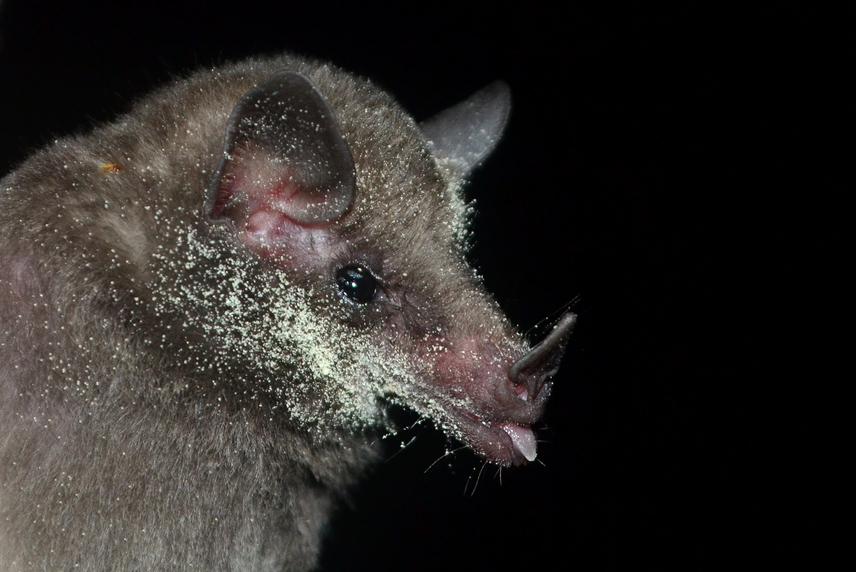Eugenia Cordero Schmidt
Through this project I seek to answer six objectives that aim to have a better understanding of the ecological role that nectar-feeding bats play in a threatened and unique environment such as Caatinga
(1) Determine which mechanisms related to food resources allow the coexistence of nectar-feeding bats taking into account morphological differences.
(2) Identify the key food items for the maintenance of nectar-feeding bat community considering spatial and temporal variations such as precipitation and vegetation composition
(3) Generate inputs that can facilitate the categorization of the threat level of the two endemic species.
(4) Define important areas or sites for the conservation of bats in the Caatinga of Rio Grande do Norte state.
(5) Promote the conservation of bats through educational workshops in the communities where the field collections will be carried out.
(6) Characterize the knowledge, attitudes and emotions of the population that inhabits Caatinga toward bats.

X vieirar polen.
Nectar-feeding bats are probably the most specialized of mammalian nectarivores, characterized by having elongated snouts, extensile tongues, reduced dentition and the ability to hover. They are responsible for pollinating ecologically and economically important group of about 528 species of angiosperms in the Neotropics. In Caatinga, where my project takes place, bats are responsible for the pollination of at least 13.1% of the plants.

Eugenia working.
Caatinga is one of the largest seasonally dry tropical forest formations in Latin America. Located exclusively in northeastern Brazil, the Caatinga is inhabited by 27 million people and 153 species of mammals, of which 90 are bats. Unfortunately, the Caatinga is subjected to a large anthropic pressure, including hunting activities, agriculture, livestock and wood extraction, which threatens the local mammalian fauna. Also, Caatinga is considered a harsh environment due to its high ambient temperature, scarce and variable rainfall and seasonal restrictions on the availability of water and food resources. Bats, manage to survive mainly using strategies of short and long distance migrations, felixibility in their diet, and presenting a close relationship with key plants such as cactus.
Neotropical Semiarid and arid lands are especially rich in nectar-feeding bats and bat-pollinated plant species. Their ecological attributes, such as the specific flower resource dependence suggest that this group of bats might be more susceptible to extinction than other neotropical bats. At least five species of nectar-feeding bats are present in my study sites including two endemic species Lonchophylla inexpectata and Xeronycteris vieirai, both poorly known and their conservation status has not been properly assessed.
The objectives of my project are divided into three approaches.
Research:
(1) Determine which mechanisms related to food resources allow the coexistence of nectar-feeding bats taking into account morphological differences.
(2) Identify the key food items for the maintenance of nectar-feeding bat community considering spatial and temporal variations such as precipitation and vegetation composition.
Conservation:
(3) Generate inputs that can facilitate the categorization of the threat level of the two endemic species.
(4)Define important areas (AICOMs) or sites (SICONs) for the conservation of bats in the Caatinga of Rio Grande do Norte state, following the criteria delimited by the Latin American Network for the Conservation of Bats (RELCOM).
Education:
(5)Promote the conservation of bats through educational workshops in the communities where the field collections will be carried out.
(6)Characterize the knowledge, attitudes and emotions of the population that inhabits Caatinga toward bats.